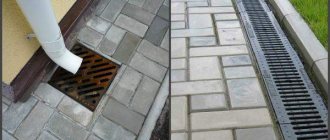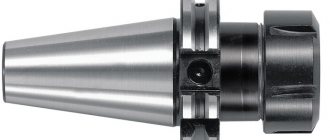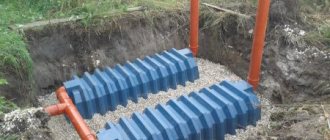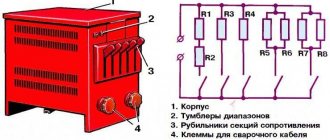A pulley block is a special device for lifting loads, consisting of two or more blocks that are sequentially wrapped around a rope or chain. The pulley design can be designed to gain in lifting speed or force. The Lenstal online store presents a large selection of blocks and ready-made multi-block systems of various parameters. You can buy a chain hoist from us with delivery throughout St. Petersburg and the region, as well as to the regions of Russia.
Initially, the pulley system arose to ensure the lifting and movement of cargo. It is from the advent of the device that the era of development of lifting mechanisms can be counted. Later, the device became widespread in various fields - from sailing rigging to arranging crossings for climbers.
Design and types of pulleys
Depending on the design, the devices provide an increase in strength or speed when lifting and loading heavy objects. There are these types of mechanisms:
- power;
- express
In the first, the load is attached to a movable clip, and the traction force is applied to the cable from the side of the last block, which is sequentially bent around it. The force that must be applied to lift is calculated as the quotient of the weight of the object being lifted by the multiplicity of the pulley (the number of rope branches). An increase in speed is possible by applying force to the movable cage and suspending the load from the running rope end. The rise occurs faster due to a significant increase in its height. Its simple calculation is the product of the piston stroke of the power drive and the multiplicity of the mechanism.
The following are used in cranes and lifting mechanisms:
- single (the ends of the cable are attached to the fixed part of the structure and to the drum);
- double (the ends of the rope are attached to a drum, which is provided with double cutting - left and right).
Depending on the power and the accessory used for entwining the moving elements of the device, there are:
- cable cars;
- rope
The design of the pulley and its operating conditions
The main area of application for pulley blocks is jib mechanisms of cranes. The whole variety of pulleys can be reduced to two requirements: either increase the force (power pulleys) or increase the speed (high-speed pulleys). In cranes, the former are more often used, and in hoists, the latter. Thus, the schemes of high-speed and power pulleys are mutually inverse.
The chain hoist includes the following components:
- Blocks with fixed axes
- Blocks with moving axes.
- Bypass blocks.
- Stroke drums.
All of the above elements are located predominantly in a vertical layout, and the location of the drum depends on the presence of bypass blocks: on top, if such blocks are absent, and below, if present.
The number of blocks with fixed axes is always one less than with moving ones. In this case, the total number of blocks determines (for power pulleys) the multiplicity of the increase in the total force on the mechanism. The number of bypass blocks is determined by the size of the unit: with an increase in the number of such blocks, the force also increases.
Power pulleys, the purpose and design of which are characterized by several parameters, the most important of which is the load developed in the lifting mechanism. It increases with the increase in the calculated load capacity of the crane, the multiplicity of the device (the number of rope branches on which the load is suspended) and the efficiency of the block. Efficiency takes into account friction losses in axial supports, as well as losses determined by the rigidity of the rope or chain.
There can be several pulley blocks, then the total load on the block is proportionally reduced. Single chain hoists are structurally simpler, but also the least effective. In them, one end is fixedly fixed on a stationary element, and the other on the drum. In this case, the angle of deflection is very limited due to the danger of the rope coming off the block. The presence of a bypass block significantly improves the operating conditions of the mechanism: the load becomes symmetrical, which reduces rope wear and increases the permissible speed of rotation of the blocks. The stability of the pulley block also depends on the distance between the bypass and main blocks. With an increase in this parameter, the reliability of the pulley as a functional unit increases, although at the same time its complexity increases (due to the presence of a connecting axis). Other chain hoist schemes used in practice are:
- Double three-fold, when the circuit contains three working units and two bypass units;
- Double triple, equipped with a leveling beam. This option is used in lifting equipment, which is operated in difficult and especially difficult conditions.
Chain hoist diagram
The diagram of a simple chain hoist looks like this:
The large circle in the figure represents the drive drum. Small circles are blocks of the system. In the left diagram, the reeving of the cable (rope) is as follows: one end is fixed on a fixed element, the second on the traction mechanism (drive drum). The right option involves attaching the rope to the drive and to the axis of the moving block.
More complex schemes of pulley systems involve three, four or more moving and fixed elements, sequentially entwined with rope.
The figure schematically shows a dual device. Two of its blocks are fixedly fixed to the surface, two are moving. In this design, the load on the drive, which exerts traction force on the cable, is approximately four times lower than the force required to lift the object directly by the engine. This difference is approximate, since it does not take into account the efficiency of the mechanism, the indicator of which usually ranges from 93 to 97% and depends on the quality of the blocks used and the complexity of the circuit.
Calculation of the chain hoist
Calculation operations to determine the forces acting on the elements of the system during operation must begin with determining the parameters and forces acting on the block:
- load impact force (Sн);
- motor traction force (Sc);
- α – deflection angle;
- D – block (stream) diameter;
- d – bushing diameter.
It is worth immediately noting that modern devices of this type actually do not have deflection angles. Therefore (due to the lack of practical meaning) they can be neglected, and in further calculations the sine of this angle can be taken as unity.
For a block, the torque equation looks like this:
Sc*R = Sn*R + q*Sn*R + N*f*d/2
- SнR is the moment of force with which the load acts on the system;
- q is a coefficient that determines the rigidity of the cable when bending around the roller (determined experimentally), it takes into account the forces caused by the structure of the turns of the cable or rope itself;
- N – load on the block axis;
- f – coefficient that determines the friction force of the block bushing.
For real practical calculations, the q indicator does not matter. More precisely, its indicator is so small in comparison with the friction force in the bushing that it can be ignored. In this case, the formula looks like this:
Sc*R = Sn*R + N*f*d/2
Find the load N. It is determined by the difference in loads on the cable from different sides of the block:
N = 2*Sн*R*sin(α)
And since we are omitting angles, we simplify the formula to:
N = 2*Sn*R
Combining everything, we get the formula for determining the efficiency of a lifting device:
Removing minor parameters, the formula simplifies to:
ηп = 1/(1+2*f*d/D)
This formula shows that for the efficiency of a system, the most important thing is the quality of the blocks and their materials used in it. The lower their friction force, the higher the efficiency index.
As a rule, the following levels of efficiency of the block system are used in calculations:
- 97% is the accepted average if the elements use bronze bushings and rolling bearings;
- 95% – plain bearings are used;
- 93% and below – dusty places, aggressive natural operating conditions of the mechanism, high temperature.
Now the calculation of forces per block must be applied to the corresponding number of them in the system.
S1 = S0* ηп
S2 = S1*ηп = S0* ηп * ηп = S0*( ηп)2
Sn = S0*( ηп)n
The sum of efforts with the geometric progression conversion formula will allow you to obtain the indicator S0 in direct dependence on the weight of the load being lifted (P).
S0 = P*(1 — ηп)/(1 — (ηп)n+1
In addition, depending on the design of the system, it will probably be necessary to take into account the loads on the remaining deflection rollers, the operating efficiency of which should also be taken into account when calculating.
Purpose and use of the chain hoist
One of the most common applications of a lifting mechanism made of series-connected blocks is the use of cranes and rigging devices as an integral part of the boom lifting and extending mechanisms. The system is used independently for lifting and moving small loads, for example, on small ships. In addition, the devices are actively used in various fields:
- double ones are often used as a part of bridge, gantry or jib cranes, where it is necessary to maintain constant pressure on the supports when lifting and lowering heavy objects;
- tension of overhead power lines and communication cables, supporting cables when organizing suspended structures;
- pulling out a car stuck in the mud, moving heavy objects;
- in mountaineering and mountain tourism for tensioning crossings, railings, and lifting victims.
The catalog of the Lenstal online store presents a large selection of block systems. Choose yourself or contact our managers for help. They will select the optimal equipment taking into account your goals, required parameters, cost and manufacturer.
Blocks, chain hoists, hoists and hoists
The block consists of a roller with an axis installed in a housing with an ear for hanging the block - a fixed block (Fig. 13.1, a). The roller has a groove for a rope, cable or chain. The load is suspended from a hook attached to the end of a rope or chain.
Rice. 13.1. Blocks and pulleys
To increase the load capacity, a system of two blocks is used: fixed and movable (Fig. 13.1, b). In this case, the load is suspended from the hook of the moving block. The weight of the load being lifted is distributed over the two branches of the rope, and the required lifting force, and therefore the tension in the rope, is equal to half the weight of the load.
Pulley hoist . A block system with several rollers in each housing is called a pulley block. The pulley shown in Fig. 13.1, c), consists of a fixed block with two rollers and a movable block also with two rollers. In such a pulley with four rope branches, the required lifting force N is reduced by 4 times. That is, the multiplicity of the pulley in this case is equal to the number of rollers in both blocks or the number of branches between the movable and fixed blocks.
Blocks and pulleys for lifting small loads are operated manually. For large loads they can be used as part of many lifting machines.
Hoist - consists of a chain pulley and a traction mechanism. A manual hoist has a worm gear (Fig. 13.2) or spur gears.
A drive sprocket 2 is mounted on the worm shaft 1, onto which an endless traction chain 3 is draped. The upper hook 4 is used for hanging the hoist. The load being lifted is suspended from the load hook 5 of the movable block.
Worm hoists have a self-braking worm gear, which prevents spontaneous lowering of the load. They are produced with a load capacity from 1.5 to 12.5 tf with a force on the traction chain of 35-70 kgf.
1 - worm shaft; 2 — drive sprocket; 3 - endless traction chain; 4 - top hook; 5 load hook
Rice. 13.2. Tal
Gear hoists are produced with a load capacity from 250 kgf to 8 tf with a force on the traction chain of up to 50 kgf.
Manual hoists are used to lift loads to a height of up to 3 m. They can be mounted on a monorail, which allows you to move loads in both vertical and horizontal directions.
Electric hoists are lifting machines driven by an electric motor and are used to lift and move cargo (Fig. 13.3). Rotation from electric motor 1 through a system of gear wheels is transmitted to drum 2, on which the cable is wound. A block with a hook 3 is suspended from the cable. With the help of the second motor 4, the hoist moves along the crane beam 5. The hoist is controlled from the floor through a push-button starting device 6.
1, 4 – electric motors; 2 – gearbox; 3 – movable block with hook; 5 – crane beam; 6 – button control panel
Rice. 13.3. Electric hoist
The load capacity of the electric hoist is from 250 kgf to 5 tf.
Jacks and winches
Jacks are portable lifting devices of small size and weight. They are used for lifting loads to a small height, installing and aligning equipment on a foundation, as well as for horizontal movement of equipment over short distances.
Jacks come in screw, rack and pinion, wedge, hydraulic and other types.
The screw jack (Fig. 13.4) is made in a steel or cast iron body 1, in the upper part of which a nut 2 is embedded. A load screw 3 is screwed into the nut, which has a ratchet wheel 4 and a freely mounted support head 5. The load is raised or lowered when the screw rotates through ratchet wheel. Spontaneous lowering of the load is prevented by the fact that the angle of the lead screw thread is less than the friction angle. Load capacity from 2.5 to 20 t. Load lifting height from 100 to 350 mm.
1 – body; 2 – nut; 3 – cargo screw; 4 – ratchet wheel; 5 – support head
Rice. 13.4. Screw jack
A rack jack consists of a housing, inside of which a steel toothed rack is placed. A rotating support head is installed on top of the rail, and a support paw is installed on the bottom.
The rack is in mesh with a gear wheel, which is driven into rotation by another gear wheel using a handle. Used to lift loads up to 5 t.
Wedge jacks are used to regulate the horizontal and vertical position of equipment during installation. Support 1 is installed in the body of the wedge jack. A nut is connected to the body with two rods. A screw 2 is screwed into it, which, when rotated, moves the wedge 3. By moving the wedge, the load is raised and lowered through support 1. The load capacity of wedge jacks is 3, 5 and 10 tf. Load lifting height 10 – 15 mm.
Hydraulic jacks are used to lift large loads from 5 to 200 tf to a height of 50 to 150 mm. The load is lifted by the pressure of the liquid (oil) on the jack piston. Pressure in the working cylinder is created using a hand or drive pump. After lifting the load and placing it on the supports, the jack piston is lowered by opening the valve connecting the cavity of the working cylinder with the fluid chamber.
Jacks can only be used to lift loads that do not exceed the lifting capacity indicated on the plate attached to it by the manufacturer. At least once a year, jacks in operation are subjected to technical inspection and testing under a load exceeding the maximum rated load capacity by at least 10%.
Winches are lifting machines in which a rope or chain is wound onto a drum that is rotated manually or by a drive.
Hand winches are used to move loads in horizontal and inclined directions and as auxiliary mechanisms for pulling loads when lifting. The lifting capacity of hand winches is 1.5 and 3 t. To increase their carrying capacity, chain hoists are used.
Machine-driven winches have a lifting capacity from 0.5 to 15 tf.
The winch consists of two steel plates 2 rigidly connected by traverses 1, between which a drum 3 and drive gears 4 are installed (Fig. 13.5).
1 – traverses; 2 – steel plates; 3 – drum; 4 – drive gears; 5 - rope
Rice. 13.5. Kinematic diagram of the winch
For correct winding of rope 5 onto the drum, it is necessary that the rope is wound from the bottom of the drum.
Jib cranes, mast lifts, etc. are described in the monograph [2].
Ropes, chains and slings
For carrying out rigging operations, steel, hemp ropes and chain slings are used.
Steel wire ropes are used as hoist ropes, as well as for the manufacture of slings, braces and guy ropes.
Safety factors for steel ropes:
R
table
= K · Q
,
where K
= 4.5 – with manual drive;
TO
= 5 – with machine
drive
;
TO
= 8 – for slings;
TO
= 3.5 – for stretch marks.
Hemp ropes are used for auxiliary work (for guy ropes).
Certain types of lifting mechanisms, types of ropes and slings used in rigging work are discussed in laboratory work No. 5.











